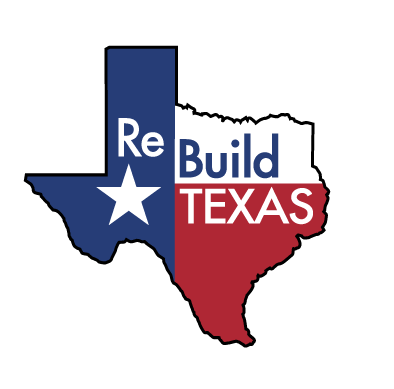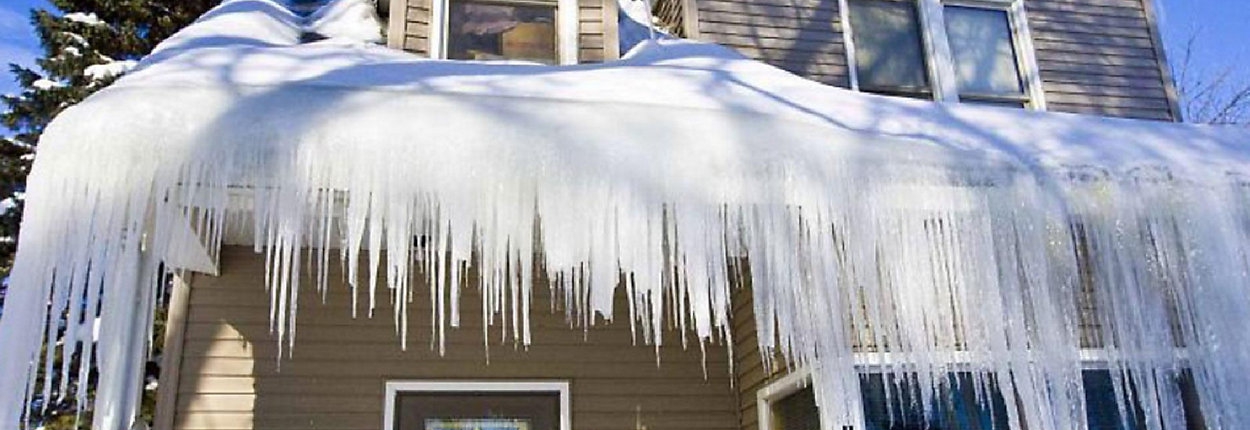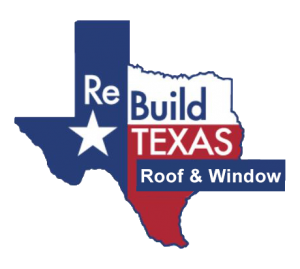ICE DAMS: Why They Can Spell Bad News for Your Property and Actions You Can Take to Addresses Any Arising Damage.
Something every home or property owner needs to be aware of while trying to assess the likelihood of damage from Winter Storm Uri is the presence of ice dams.
Along with this historic snow and ice fall, there have been lots of issues here in Texas. In fact “issues” being an UNDERSTATEMENT; Near undrivable road conditions, major power outages or failures for that matter, lack of water resources, clean water, or an unwanted abundance in the form of burst pipes and flooding homes. Unfortunately, it doesn’t stop there. Ice dams can seem like harmless “icicles” to any unsuspecting homeowner, but the reality is that if left unaddressed, the potential for leaks and even serious damage is a very real and likely possibility.
THE IMPACT OF ICE DAMS
During an ice and snow storm, ice can slowly accumulate on the overhang of your roof until an ice wall forms after heavy snowfall. Once the wall forms, ice buildup gets exponentially worse, and water begins pooling behind it. Roof shingles are only made for water runoff, not water or ice accumulation, so that water will go under the shingles, and into your house, if not taken care of — And that could result in leaks and flooding inside your home. Your house is full of insulation, and it is literally a sponge. By the time that sponge (your insulation) is saturated, and now it’s dripping into your house – you’ve got a much bigger problem than you think you have. The end result is having to tear out all your sheetrock, and existing insulation.
SIGNS OF AN ACTIVE ICE DAM
The place an ice dam forms on your roof is dependent on its style and slope. Most often, they commence growth on the roof edge and begin to back up from there. Two of the most telltale signs that your home has an active ice dam are if moisture is present in your attic or if there are damp areas on your home’s ceilings. If either of these occurrences are happening, it means that the ice dam has compromised the membrane of your home’s roof. However, there are less obvious signs of ice dams that homeowners often miss, allowing for substantial damage to occur. If there is an abundance of snow on the ground and on a porch roof, but minimal snow on the home’s main roof, it’s a signal that heat is escaping your attic because of subpar insulation and ventilation.
BEST IMMEDIATE COURSE OF ACTION
If you do suspect and ice dam, the best course of immediate action is to take photos of the ice dam and surrounding areas. Additionally, make sure to notate the date the ice dams appeared, and the date of the storm. The reason this is important is because when filing a claim with your insurance, having proper documentation inclusive of dates and photos will give you a major leg up when trying to prove your case. The next best course of action is to reach out to a professional for a thorough damage assessment.
MAIN REASONS TO HAVE ANY AREAS WHERE ICE DAMS FORMED ASSESSED.
Reason 1: Ice dams often cause water to leak through your roof and into your home. That water can cause all kinds of expensive interior water damage, cause electrical failures (or fires), result in black mold, ruin furniture and valuables, and displace people and pets. Sometimes you see a little leaking before it gets worse, but sometimes the leaking is heavy right away. Leaking is the biggest immediate reason to get ice dams removed, and it’s the biggest risk you run in delaying – unless an electrical fire breaks out.
Reason 2: Ice dams often attract even more snow and ice. Snow tends to stick to or pile up on ice dams, and icicles often form on or near ice dams as water melts and refreezes with the temperature fluctuations.
Reason 3: Ice dams make it harder to keep your roof snow-free. They get in the way of your raking the roof. Of course, not keeping up with roof-raking is probably a major reason you have ice dams in the first place. Most people in Texas are not aware of the proper procedures for roof raking obviously because snow and ice are a rare occurrence here. That’s why we suggest that the easiest form of action is to call a professional.
Reason 4: There’s a small chance your roof may collapse. Roof collapses don’t happen as often as you may think, and we don’t know of a single case where an ice dam was the only reason a roof collapse. But ice dams weigh tons, and roof snow often weighs even more. The combination of ice dams and roof snow is just too much tonnage for some roofs to handle (especially if rain follows a heavy snowstorm).
Reason 5: Ice dams can cause fires, electrical fires in particular. Water and electricity don’t mix. With leaks and saturated insulation come the risk of an electrical event or even fire.
Reason 6: Ice dams ruin your peace of mind. Even if this ice dam won’t end up damaging your home or causing other harm, you can’t know that for sure. You can live in a house for 40 years and never have an ice dam, until the “big one” shows up. You can have an ice dam every year and have it go away on its own, until you get one that wrecks everything.
Reason 7: Why you should call a professional. Many times, from the outside it is nearly impossible to determined what if any damage has already been caused. Often the damage is interior and may take a trained eye to spot. For peace of mind, its best to have a trained professional do a thorough assessment.
SIGN OF A LARGER PROBLEM
An ice dam is plenty of trouble on its own, but it’s also a sign of a larger problem: either your attic has an insulation problem, a ventilation problem, thermally leaky areas (AKA attic bypasses), or all three. It’s unusual for ice dams to form on a cool roof. Nearly every time, ice dams form because the attic contains too much heat, and causes snow to melt and run down your roof, refreezing and damming when it reaches the colder parts of your roof (usually your overhangs or valleys, or both). If minimal heat enters your attic because of proper insulation & sealed attic bypasses, or if heat easily can escape your attic because of proper ventilation, ice dams are far less likely to become a problem.




